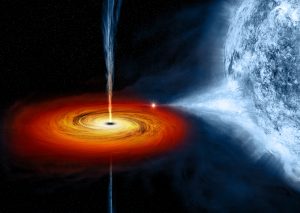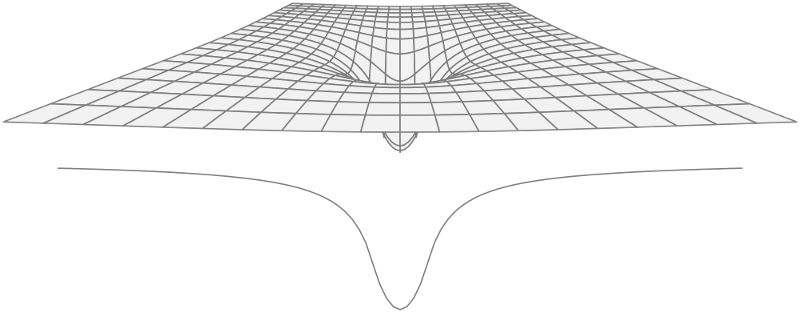As a mega fan of sci-fi movies and astronomy I am always confronted with the bitter taste of space ignorance. One of the most common misconceptions–not only in sci-fi movies but also in our pop culture–is about black holes. Ever heard of the phrase “getting sucked into a black hole?” Newton’s law of gravitation tells us that masses in gravitational fields orbit each other in ellipses, parabolas and hyperbolas. Notice how “sucking” isn’t on this list.

For us to have a better understanding of the universe we live in, we must get rid of misconceptions in science and replace them with facts. So if a black hole doesn’t “suck” then what does really happen at a black hole?
Before we can take this journey through space together, some elements need to be defined for the less nerdy astronomy readers.
Black holes are the remaining cores of massive stars. So, basically a lot of mass squeezed into a tiny space, which results in a strong gravitational pull. This strong gravitational pull arises from the curvature of space. Imagine if the universe was a giant rubber sheet with objects of different masses spread throughout it. Heavier objects would curve the rubber sheet more than lighter objects. A black hole on this sheet would be like a bottomless pit—a hole in the observable universe.

An artist’s drawing of the black hole Cygnus X-1, pulling in matter from a nearby blue star. Credits: NASA/CXC/M.Weiss Source: http://www.nasa.gov/audience/forstudents/k-4/stories/nasa-knows/what-is-a-black-hole-k4.html

An illustration of the “rubber sheet” 2-D simplification of gravity’s effect on space-time, with a 1-D profile of the shape of the curve along any one direction.
Image Credit: BenRG, public domain
Source: https://medium.com/starts-with-a-bang/astroquizzical-how-does-gravity-escape-from-a-black-hole-5ef156bf048d#.v1pxirpaz
So passing by a black hole we wouldn’t get sucked in, unless we were unfortunate enough to get pulled into its gravitational field. If we did managed to get pulled in, we would disappear from the observable universe. This is because the gravitational pull is so strong that not even light can escape a black hole. Thus being given the name “black” hole.
To our friends outside the black hole it may seem that we did in fact get sucked in because we vanished from sight. But we know this isn’t true, and sadly we can never leave the black hole to tell our friends. So as we frantically wave our arms and call out to our friends for help, they head back home and tell everyone that black holes do in fact suck. 🙁
Until our next journey, live long and prosper.
By: Flora Iranmanesh

2 responses to “Black Holes Don’t Suck!”